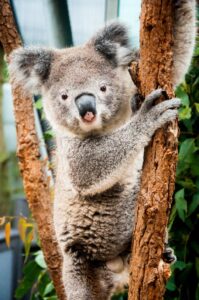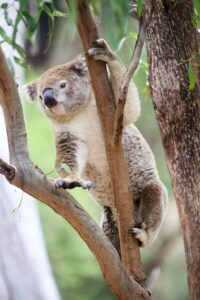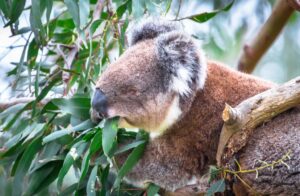Koalas, often mistakenly referred to as "koala bears," are one of Australia's most iconic and beloved animals. These marsupials are native to the eastern and southern parts of Australia and have a rich history and unique characteristics that make them stand out in the animal kingdom. In this article, we'll delve deep into the world of koalas, exploring their habitat, behavior, and the challenges they face in the modern world.
Key Takeaways
- Koalas are marsupials native to eastern and southern Australia.
- They are known for their large round head, big furry ears, and distinctive call.
- Koalas have a specialized diet consisting mainly of eucalyptus leaves.
- Conservation efforts are in place due to the declining koala population.
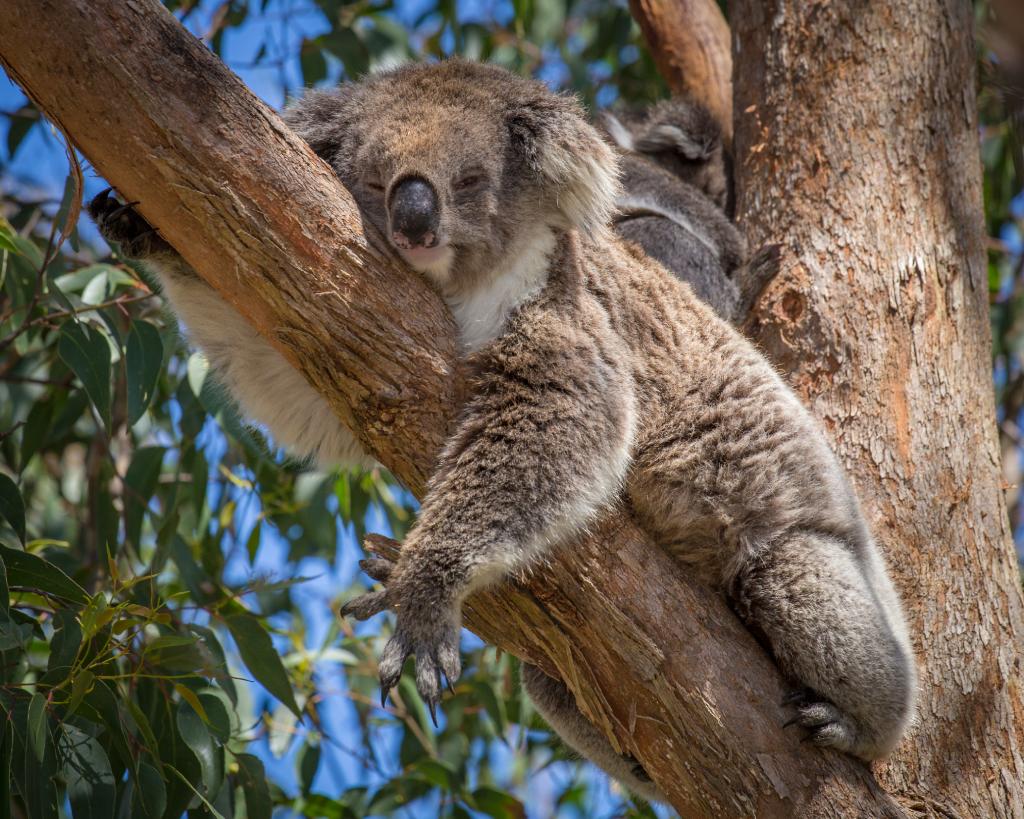
Habitat and Distribution
Koalas are native to Australia and are predominantly found in the eastern and southern regions of the country. Their habitat primarily consists of open forest and woodland communities. The presence of specific food trees, particularly eucalyptus, defines their habitat. Koalas are often found in areas with fertile soils and along watercourses. Despite urbanization and habitat destruction, koalas have been known to survive in partially cleared areas and even in urban settings.
The distribution of koalas spans across Queensland, New South Wales, Victoria, and a small part of South Australia. Over the past two centuries, while their overall distribution hasn't seen a significant reduction, individual koala populations have witnessed a decline. Factors such as habitat destruction for agriculture and human settlements have led to local extinctions. Fossil records suggest that koalas once inhabited parts of Western Australia and the Northern Territory, but there's no evidence of their presence in Tasmania.
In Queensland, particularly in South East Queensland, koalas face the challenge of coexisting with a rapidly growing human population.
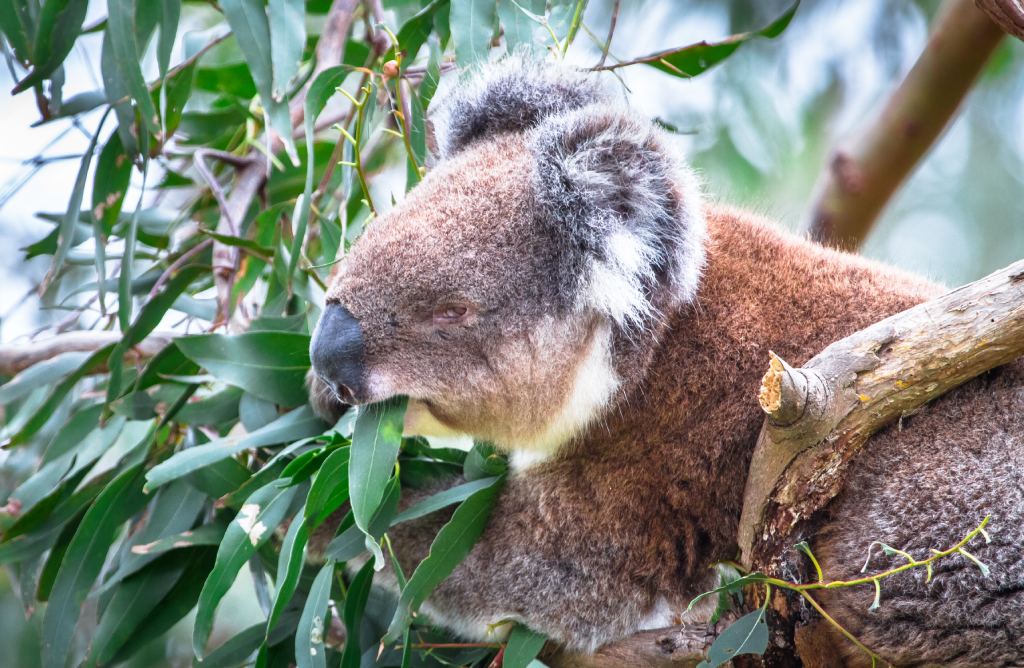
Physical Description and Behavior
Koalas are easily recognizable with their large round head, big furry ears, and a prominent black nose. Their fur is typically grey-brown with white patches on the chest, inner arms, ears, and bottom. One unique feature of koalas is their hard bottom, which allows them to comfortably sit in tree forks for extended periods. This characteristic is shared with their closest relative, the wombat.
When it comes to their senses, koalas have poor vision but compensate with excellent hearing, which helps them detect predators and other koalas. Their acute sense of smell aids in identifying other koalas and their preferred food trees.
https://www.youtube.com/watch?v=oI3ADcDH0Uc
Koalas are primarily nocturnal, being most active at night and around dawn and dusk. They are known to sleep for up to 20 hours a day, a behavior attributed to their low-energy diet and the energy required to digest toxic eucalyptus leaves. Koalas are solitary animals with overlapping home ranges, allowing occasional contact for mating purposes.
Dietary Habits
Koalas have a specialized diet, feeding mainly on eucalyptus leaves. They also consume leaves from related tree species like lophostemon, melaleuca, and corymbia. On average, a koala consumes about 500 grams of leaves daily. These leaves provide most of their water requirements, eliminating the need for koalas to descend from trees for water, except during extremely hot or dry conditions.
Eucalyptus leaves contain toxic compounds, but koalas have evolved a specialized digestive system to break down these toxins. They first grind the leaves into a paste using their molars, allowing nutrient absorption in the stomach. The liver isolates the toxins, which are then excreted as waste. The remaining residue undergoes further breakdown by specialized bacteria in the koala's digestive system.
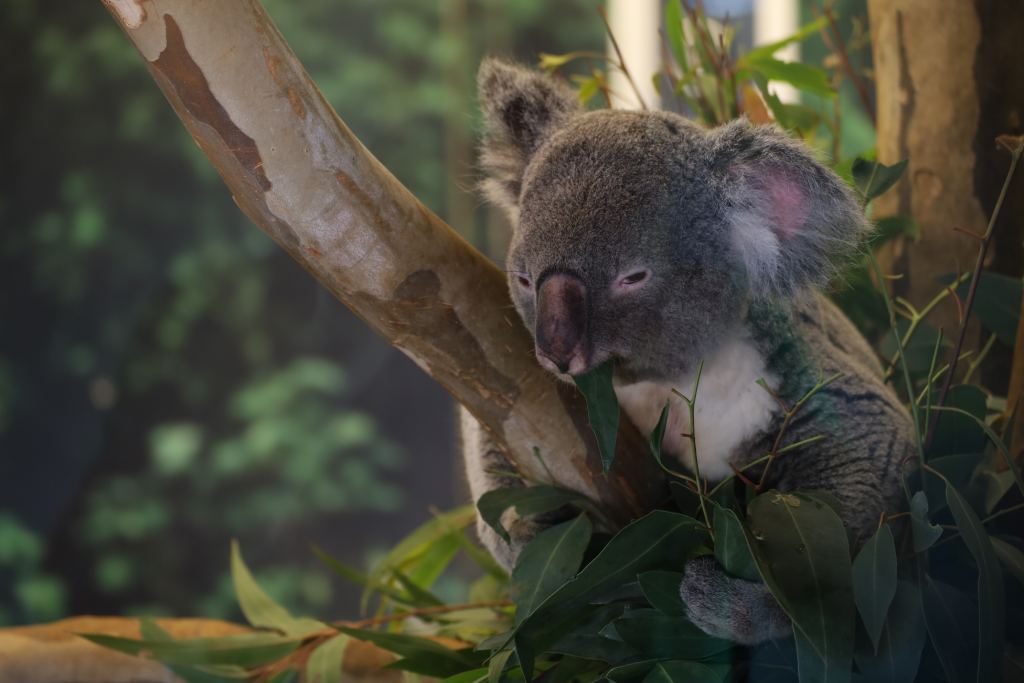
Reproduction and Lifecycle
Koalas have a unique reproductive cycle. Males begin mating around the age of three to four, while females can start mating and breeding by two years. Typically, females give birth once a year for the next 10 to 15 years. After a gestation period of 35 days, a female koala gives birth to a single joey, although twins are rare but possible.
The joey remains in the mother's pouch for about six months before venturing out. For the next six to 12 months, the joey rides on its mother's back. By the age of one, the young koala is weaned and establishes its own home range, overlapping with its mother's territory.
https://youtube.com/watch?v=PzU-DjUMzsg
On average, koalas have a lifespan of 10 to 12 years in the wild. While females can breed into their teens and live up to 18 years, males generally have a slightly shorter lifespan.
Conservation Status
Koalas are currently listed as endangered, with their status recently changed from vulnerable. This change signifies an increased level of protection for koalas, especially in regions like Queensland, New South Wales, and the Australian Capital Territory. The primary threats to koalas include habitat destruction, diseases like Chlamydia, and human-induced challenges.
Efforts are underway to conserve and protect koalas and their habitats. Awareness campaigns, habitat restoration projects, and research are some of the measures being taken to ensure the survival of this iconic Australian marsupial.
https://youtube.com/watch?v=vvmMxju9xNE
Challenges Faced by Koalas
Koalas, despite their iconic status, face numerous challenges in their natural habitat. These challenges range from habitat destruction to diseases and human-induced threats. Understanding these challenges is crucial for the conservation and protection of this beloved marsupial.
Loss of Habitat
The primary threat to koalas is the loss of their habitat. Since the European settlement in Australia in 1788, more than four-fifths of the original koala habitat has been destroyed. This destruction is due to various reasons:
- Clearing of land for human settlement, agriculture, mining, and infrastructure.
- Urbanization leading to fragmentation of their habitats.
- Deforestation for commercial purposes.
The loss of habitat leads to several problems for koalas:
- Increased human disturbance.
- Injury or death from traffic.
- Attacks from domestic animals like dogs and cats.
- Effects of garden pesticides contaminating water sources.
- Overcrowding leading to increased competition for food and territory.
- Increased stress making them more susceptible to diseases.
Learn more about Koala habitat
Cars and Dogs
With the expansion of roads and housing estates, koalas face the danger of cars and domesticated dogs. It's estimated that over 4,000 koalas are killed annually due to these threats. Roads often cut through koala habitats, making it necessary for them to cross these roads, leading to fatal accidents.
https://youtube.com/watch?v=TNnCa3afq1o
Bushfires
Bushfires pose a significant threat to koalas. If a koala population resides in an area surrounded by development, a single fire can wipe out the entire colony. With the increasing frequency of bushfires in Australia, this threat is becoming more pronounced.
Diseases
Koalas are susceptible to several diseases, with Chlamydia being the most common. This disease can cause blindness, pneumonia, urinary tract infections, and reproductive tract infections leading to infertility in females. Symptoms include sore eyes, chest infections, and "wet bottom" or "dirty tail." While Chlamydia is harmless in populations with abundant resources, it becomes a problem when habitats are reduced.
Other diseases affecting koalas include leukemia and skin cancers. The stress from habitat loss and other threats makes them more vulnerable to these diseases.
Learn more about Koala diseases
Dieback and Ecosystem Imbalance
Dieback refers to the gradual dying of trees due to various factors like land degradation, soil nutrient leaching, and soil salination. The underlying cause for most of these factors is the clearing and disturbance of forests. With 75% of the primary koala food tree species declining due to dieback, this poses a significant threat to their survival.
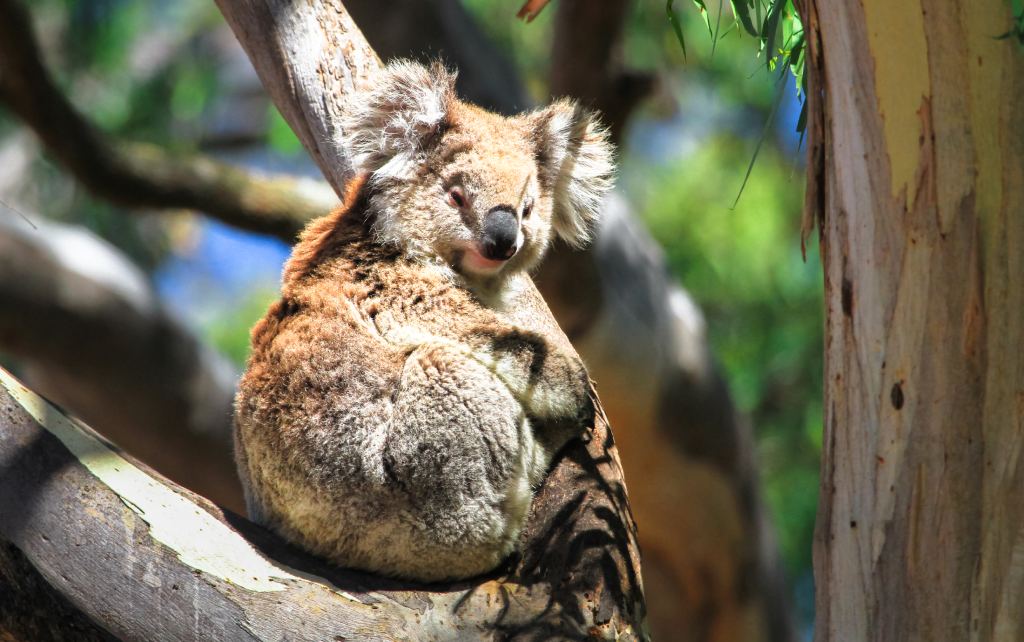
Other Threats
Apart from the above challenges, koalas face threats from natural predators like goannas, dingoes, powerful owls, wedge-tailed eagles, and pythons. However, these predators mainly target juvenile koalas. Feral animals, especially foxes and large cats, also pose a threat. Additionally, drought conditions have been observed to lead to a decline in koala populations.
Frequently Asked Questions
Why are koalas important to the Australian ecosystem?
Koalas play a crucial role in the Australian ecosystem. By feeding on eucalyptus leaves, they help in the maintenance and balance of these forests. They also serve as a food source for some predators.
How can we help in the conservation of koalas?
Conservation efforts can range from habitat restoration to supporting organizations working for koala conservation. Raising awareness, adopting sustainable practices, and reducing our carbon footprint can also make a difference.
Are koalas friendly to humans?
While koalas are generally docile, it's essential to remember they are wild animals. It's always best to observe them from a distance and not disturb their natural behavior.

